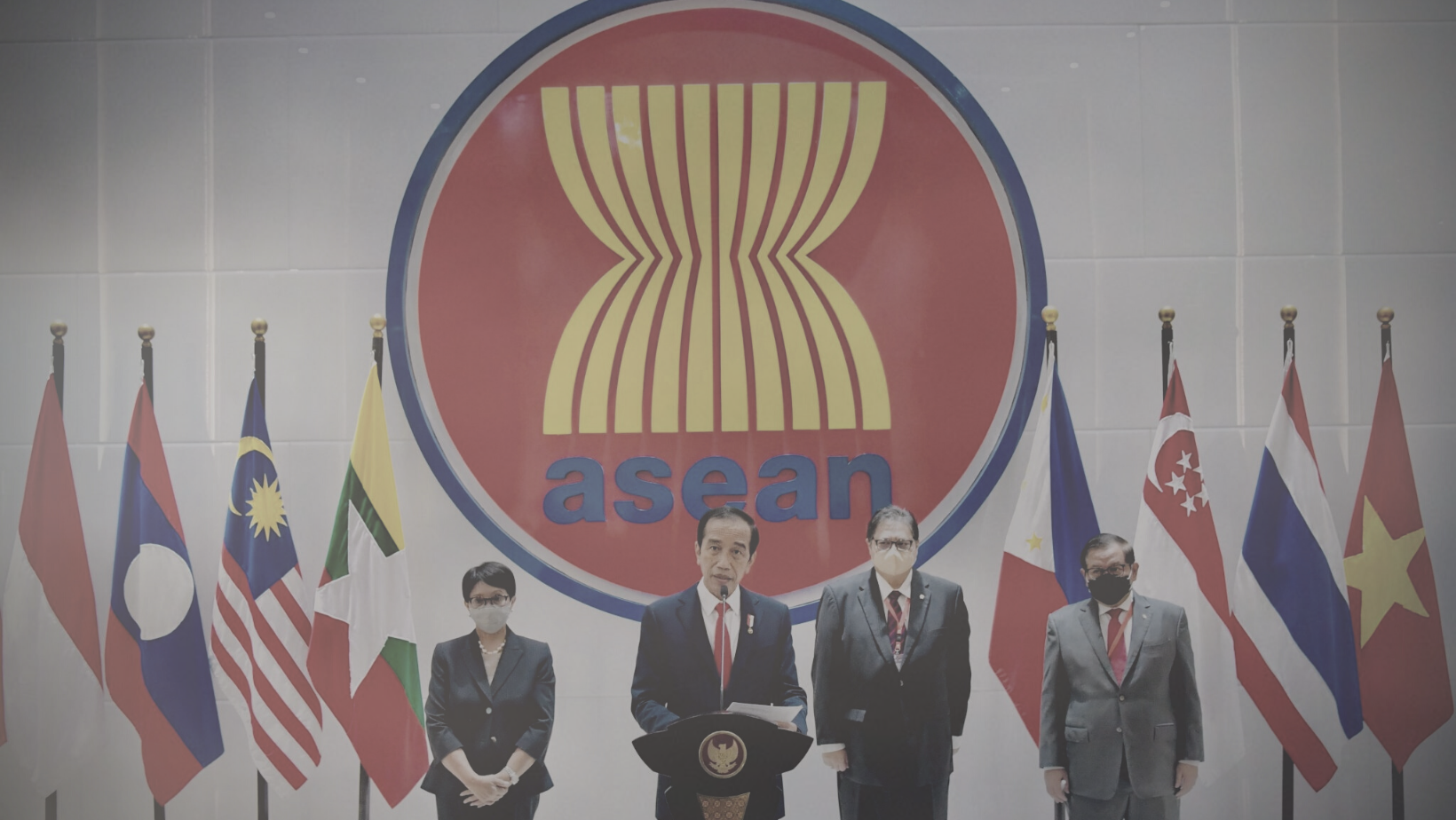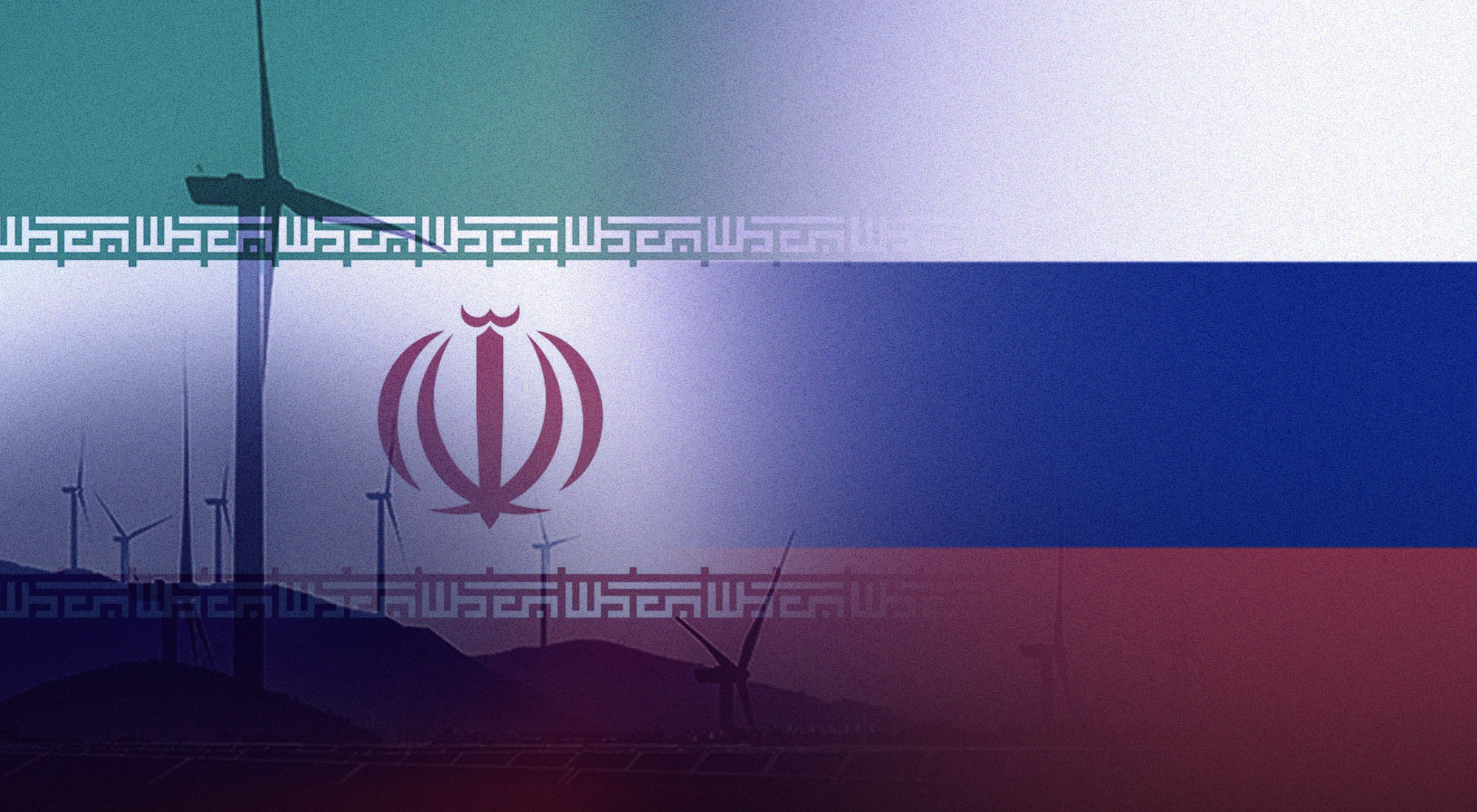Born in the cauldron of the Cold War, the Association of Southeast Asian Nations (ASEAN) has grown into one of the world’s most important regional organizations. Today, ASEAN is largely considered as the preeminent platform for multilateralism in the Indo-Pacific. As a non-aligned organization, ASEAN boasts a unique ‘convening power’, namely its ability to regularly organize pan-regional dialogues and enmesh major powers in institutionalized diplomacy.
Over the past half a century, ASEAN has helped create an unprecedented era of peace and prosperity. Despite the extreme diversity of its membership, from communist regimes in Indo-China to vibrant democracies in archipelagic Southeast Asia, no two Member States have gone to war in recent decades. If anything, several Member States have even agreed to submit their disputes to international arbitration, thus resolving seemingly intractable issues through peaceful means.
Having successfully concluded the Agreement on the Common Effective Preferential Tariff (CEPT) Scheme for the ASEAN Free Trade Area (AFTA) ahead of schedule, thus reducing intra-regional tariff rates to minimal levels, the regional body is now moving towards the creation of a ‘common market’. Should ASEAN prove successful in its latest endeavor, Southeast Asia could transform into an integrated, advanced and sizeable production hub and consumer market.
Notwithstanding its enormous achievements, ASEAN is facing what can be described as a ‘middle institutionalization trap’, namely the insufficiency of pre-existing decision-making modalities in addressing new and emerging strategic challenges. From the South China Sea disputes to the ongoing crisis in Myanmar, the regional body has struggled to forge a common front and/or mobilize effective solutions.[1] As a result, ‘ASEAN Centrality’, namely the pivotal role of the reginal body in shaping the Indo-Pacific security architecture, has come under question.[2]
ASEAN is also grappling with ‘cowboy diplomacy’ among intransigent Member States, which have placed domestic regime prerogatives above the principles and interests of the Southeast Asian region as a whole. The path forward, however, is to transcend the deficiencies of consensus-based decision-making by adopting new decision-making modalities as well as embracing ‘minilteralism’, namely parallel issue-based, ad-hoc cooperative arrangements among key ASEAN members, which have shown growing willingness to proactively address regional challenges.[3]
The great promise
Built on the ashes of the Western-leaning Southeast Asia Treaty Organization (SEATO), and subsequently the more non-aligned MAPHILINDO (Malaysia, Philippines, Indonesia) organization, ASEAN has steadily grown into a highly inclusive organization, welcoming nations with extremely diverse political regimes, levels of economic development, and socio-religious orientation.[4]
Among its ranks are the tiny oil rich kingdom of Brunei and the highly-industrialized city-state of Singapore, as well as impoverished nations in Indo-China such as Myanmar and Laos, not to mention the relatively large nations of Indonesia and the Philippines, which collectively host close to 400 million people. The region is also home to a plethora of political systems from multi-party autocracies (Singapore and Thailand) and communist regimes (Vietnam and Laos) to absolute monarchy (Brunei) and vibrant democracies (Indonesia and the Philippines). [5]
Despite the extreme diversity of its membership, ASEAN has progressively managed to create a semblance of a “security community”, namely the increasing unthinkability of war, or the use of coercive force, in intra-regional affairs. This marks a major departure from the heady days of Konfrontasi, when Indonesia and the then newly-emerging Malaysian Federation inched close to all-out war.[6]
Over the past fifty years, ASEAN nations have managed to either settle or mitigate conflict among each other with a mixture of good-will, diplomacy and, at times, international arbitration. Indonesia and Malaysia, for instance, resolved their maritime disputes over Pulau Ligitan and Pulau Sipadan through international arbitration, while the Philippines has largely abandoned its earlier hopes of coercively retaking the oil-rich Malaysian province of Sabah. More recently, Thailand and Cambodia also decided to resolve their border dispute over the Temple of Preah Vihear through international adjudication, reflecting the profound institutionalization of peace-building and conflict-management culture among ASEAN members.[7]
Crucially, ASEAN has not only finalized a free trade agreement among its members, reducing tariffs on intra-regional trade to between zero and five percent, but is also moving towards the creation of a ‘common market’, transforming Southeast Asia into an integrated production hub and consumer market, with minimal restrictions on the flow of labor and capital among Member States. Should ASEAN turn into a coherent economic unit, it will likely feature among the top five largest economies in the world in the coming decades.[8] Geopolitically, ASEAN also boasts a unique ‘convening power’, namely its ability to organize and host institutionalized dialogue among major powers and competing forces in the Indo-Pacific region. The ASEAN Regional Forum (ARF), for instance, is arguably the most important post-Cold War platform for institutionalized dialogue among major powers; the US, China, Japan, India, Russia, and the European Union. It is also among the few avenues through which isolated nations such as North Korea can diplomatically interact with other regional players, following the collapse of the “Six Party Talks” more than a decade ago.[9]
Meanwhile, the ASEAN Plus Three (ASEAN+3) mechanism, East Asia Summit, and ASEAN Defense Ministers Meeting Plus (ADMM-Plus) also complement the ARF by providing multifarious avenues for full-spectrum, high-level dialogue and institutionalized cooperation among all major Indo-Pacific powers and actors.[10] But ASEAN cannot just rest on its laurels amid a whole host of new and emerging strategic challenges, which have tested the mettle of the regional organization.
Middle institutionalization trap
The great historian Ibn Khaldun once observed that even the greatest nations could collapse once they lost their internal cohesion (Assabiyah).[11] Today’s ASEAN lacks internal cohesion and, accordingly, faces an existential crisis on two levels. First of all, the regional body operates on the twin principles of muafakat (consensus) and musyawarah (consultation) as the bedrock of the so-called “ASEAN Way”. The problem, however, is that the regional body operates not on consensus per se, which is crucial to building cohesion and rapport in a highly diverse region, but instead unanimity, which is almost impossible to achieve on inherently divisive, high-stakes issues.
The predictable upshot of overreliance on unanimity-based decision-making is institutional paralysis, namely the inability of ASEAN to forge a robust and united response to urgent and complex geopolitical challenges in the region. For instance, the majority of ASEAN states have no direct stake in the South China Sea disputes, where Vietnam, the Philippines and Malaysia are at loggerheads with China. Yet, almost all ASEAN countries count China as their top trading partner as well as a key source of public infrastructure investments.[12]
Meanwhile, the junta in Myanmar has repeatedly vetoed any robust ASEAN statement regarding the human rights situation in the country, whether during the Rohingya crisis, where hundreds of thousands of Muslim minority groups fled the country amid state-sponsored mass atrocities, or the more recent political upheaval following the coup against the democratically-elected government in early 2021.[13] Crucially, unanimity-based decision-making also leaves the regional body vulnerable to external predation, since a single negative vote, at the behest of a superpower patron, could torpedo ASEAN unity on a paramount issue.
As veteran diplomat Barry Desker warned, the upshot of the status quo institutional arrangements is the “ability of external parties to shape the positions of ASEAN members on regional issues.” This is especially true, the Singaporean diplomat argues, in the case of China, which “exerts its influence on ASEAN members to prevent any decisions which could affect its preference for bilateral negotiations” rather than dealing with the regional body multilaterally.[14]
The second problem for ASEAN is the advent of “cowboy diplomacy” among its ranks. This is especially true in the case of Cambodian strongman Hun Sen, who has repeatedly exploited his privileges as ASEAN chairman to unilaterally dictate the direction of the regional body. In particular, an ASEAN chairman – selected annually on a rotational basis – has two important prerogatives, namely the ability to (i) determine the policy and priority agenda of the ASEAN for a whole year; and (ii) issue a “chairman’s statement” whenever there is disagreement on a particular issue.
Back in 2012, the Cambodian leader Hun Sen provoked an unprecedented crisis by actively blocking even the discussion of the South China Sea disputes in ASEAN proceedings. Just months earlier, the then Chinese President Hu Jintao visited Cambodia, offering billions in investments while advising his host not to move “too fast” on negotiating an ASEAN-driven Code of Conduct in the South China Sea, which could constrain China’s room for maneuver in adjacent waters. In response, Hun Sen reportedly promised his patrons in Beijing that he will ensure the maritime disputes will not be “internationalized” under his rotational leadership of ASEAN.[15]
The upshot was a verbal tussle between the Cambodian leader and the then Filipino President Benigno Aquino who, just months after the Philippine-China naval standoff over the Scarborough Shoal in the South China Sea, warned: “The ASEAN route is not the only route for us. As a sovereign state, it is our right to defend our national interest.”[16] A decade later, when Hun Sen once again assumed the chairmanship of ASEAN, the Cambodian leader once again engaged in unilateral moves. Early on he broke the partial diplomatic siege on the Myanmar junta, the top leaders of which were disinvited from regional meetings amid the lack of progress on the implementation of the ASEAN-brokered “Five-Point Consensus”, which aims to restore stability and democratic elections to the Southeast Asian country.[17]
In clear defiance of his colleagues, Hun Sen became the first foreign leader to officially visit Myanmar following the coup in 2021, thus legitimizing the isolated junta to the chagrin of civil society groups in Myanmar as well as key ASEAN members and major powers, especially the US.[18] As a result, the regional body once again found itself in the midst of an internal crisis, further eroding its centrality in effectively shaping geopolitical affairs in its very own backyard.
Making ASEAN great again
Fortunately, there is a path forward for ASEAN. Ironically, the regional body can transcend its current predicament by taking often-forgotten lessons from its own past successes. To begin with, ASEAN has often operated not on unanimity, or even consensus, but on majority-based decision-making. In particular, the “ASEAN Minus X” formula allowed Southeast Asian nations to, inter alia, swiftly negotiate a free trade agreement as well as lay down the foundations for a regional counter-terrorism mechanism.[19]
Alternatively, the regional body can also take a lesson or two from the European Union, which has adopted the “qualified majority” voting modality that takes into consideration the respectively differential population of Member States into overall voting weights.[20] ASEAN has a long history of ‘minilateralism’,[21] namely ad-hoc, issue-specific cooperation among key states in parallel to ASEAN multilateral proceedings. Key Southeast Asian states, from Singapore and Malaysia to Thailand, Indonesia and the Philippines, played a vital role in post-conflict democratization of Cambodia[22] as well as in post-referendum stabilization of East Timor.[23] In a much darker chapter in its history, key ASEAN countries even intervened to support the remnants of a brutal regime in Cambodia in order to contain an expansionist Vietnam, reflecting the paucity of the principle of ‘non-intervention’ as the supposed cornerstone of the regional body.[24]
In recent months, key ASEAN members – Malaysia, Singapore and Indonesia – censured Hun Sen’s unliteral policy towards Myanmar, thus forcing the ASEAN chairman to revisit his “cowboy diplomacy” and, accordingly, disinvite the junta’s representative to key regional meetings in early 2022.[25] A decade ago, Indonesia played a similar role by espousing the so-called “Six-Point Principles”, thus ensuring henceforth no ASEAN chairman blocks the discussion of the South China Sea disputes.[26]
Recent developments have clearly exposed the institutional deficiencies and inherent weaknesses of ASEAN. But history also shows that ASEAN can hugely benefit from more majority-based decision-making as well as minilateral cooperation among key member states, which have displayed firm strategic convictions and are in possession of the necessary resources to address key challenges from the South China Sea disputes to the Myanmar crisis.
References
[1] Amitav Acharya, “The Myth of ASEAN Centrality?” Contemporary Southeast Asia 39, no. 2 (2017): 273–79. http://www.jstor.org/stable/44683769.
[2] See Richard Javad Heydarian, At a Strategic Crossroads: ASEAN Centrality amid Sino-American Rivalry in the Indo-Pacific, (Washington DC: Brookings Institution, 2020), https://www.brookings.edu/research/at-a-strategic-crossroads-asean-centrality-amid-sino-american-rivalry-in-the-indo-pacific/.
[3] See, Richard Javad Heydarian, “ASEAN Needs to Move to Minilateralism,” East Asia Forum, December 5, 2017, https://www.eastasiaforum.org/2017/12/05/asean-needs-to-move-to-minilateralism/.
[4] The Economist Intelligence Unit, Riding the ASEAN Elephant: How Business Is Responding to an Unusual Animal, Special Briefing, February 2013, http://ftp01.economist.com.hk/ECN_papers/ridingASEAN.pdf.
[5] Ibid.
[6] Adam Leong Kok Wey, “The War That Gave Birth to ASEAN,” The Diplomat, September 9, 2016, https://thediplomat.com/2016/09/the-war-that-gave-birth-to-asean/.
[7] See Chapter 8 in Richard Javad Heydarian, The Indo-Pacific: Trump, China and the New Struggle for Global Mastery (Singapore: Palgrave Macmillan, 2020).
[8] The Economist Intelligence Unit, 2013.
[9] See Chapter 8 in Richard Javad Heydarian, The Indo-Pacific: Trump, China and the New Struggle for Global Mastery (Singapore: Palgrave Macmillan, 2020).
[10] Ibid.
[11] See, for instance, Ibn Khaldun, The Muqaddimah: An Introduction to History (New Jersey: Princeton University Press: 2015).
[12] See, Joshua Kurlantzick, Charm Offensive: How China’s Soft Power Is Transforming the World (New Haven: Yale University Press, 2008); and Evelyn Goh, ed., Rising China’s Influence in Developing Asia (Oxford: Oxford University Press, 2016).
[13] Ben Bland, “ASEAN Muddles through on Myanmar,” The Interpreter, October 22, 2021, https://www.lowyinstitute.org/the-interpreter/asean-muddles-through-myanmar.
[14] Richard Javad Heydarian, “Is ASEAN Still Relevant,” The Diplomat, March 26, 2015, https://thediplomat.com/2015/03/is-asean-still-relevant/.
[15] Prak Chan Thul, “Hu Wants Cambodia Help on China Sea Dispute, Pledges Aid,” Reuters, March 31, 2012, https://www.reuters.com/article/us-cambodia-china-idUSBRE82U04Y20120331.
[16] Barbara Mae Dacanay, “Aquino Rebukes Hun Sen”, Gulf News, November 20, 2012, https://gulfnews.com/world/asia/philippines/aquino-rebukes-hun-sen-1.1107618.
[17] See the full document here: https://asean.org/wp-content/uploads/Chairmans-Statement-on-ALM-Five-Point-Consensus-24-April-2021-FINAL-a-1.pdf.
[18] “Protests, Anger as Hun Sen Visits Myanmar’s Military Leaders,” Aljazeera English, January 7, 2022, https://www.aljazeera.com/news/2022/1/7/protests-anger-as-hun-sen-visits-myanmars-military-leaders
[19] Ralf Emmers, “ASEAN Minus X: Should This Formula Be Extended?” RSiS, October 24, 2017, https://www.rsis.edu.sg/rsis-publication/cms/co17199-asean-minus-x-should-this-formula-be-extended/#.Yi8PVnpByUk.
[20] See, https://www.consilium.europa.eu/en/council-eu/voting-system/qualified-majority/.
[21] Moises Naim (2009) “Minilateralism,” Foreign Policy, June 21, 2009, https://foreignpolicy.com/2009/06/21/minilateralism/.
[22] See, Lee Jones, “ASEAN Intervention in Cambodia: From Cold War to Conditionality, The Pacific Review 20, no.4 (2007): 523-550.
[23] Alan Dupont, “ASEAN’s Response to the East Timor Crisis,” Australian Journal of International Affairs 54, no.2 (June 2010): 163-170, DOI: 10.1080/713613510.
[24] Deepak Nair, “ASEAN on Myanmar’s Coup: Revisiting Cold War Diplomacy on Cambodia,” New Mandela, March 22, 2021, https://www.newmandala.org/asean-on-myanmars-coup-revisiting-cold-war-diplomacy-on-cambodia/.
[25] Richard Javad Heydarian, “How Hun Sen’s Cowboy Diplomacy’ Risks Returning Asean to Crisis and Division,” South China Morning Post, February 5, 2022, https://www.scmp.com/comment/opinion/article/3165682/how-hun-sens-cowboy-diplomacy-risks-returning-asean-crisis-and.
[26] Donald K. Emmerson, “Beyond the Six Points: How Far Will Indonesia Go?” East Asia Forum, July 29, 2012, https://www.eastasiaforum.org/2012/07/29/beyond-the-six-points-how-far-will-indonesia-go/.








